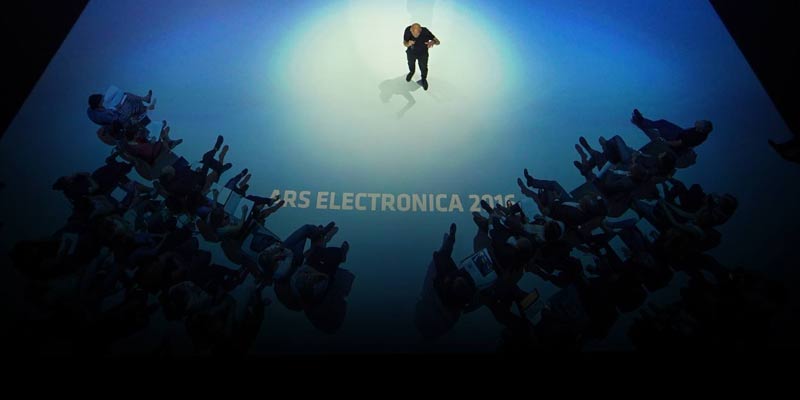Collide@CERN Ars Electronica Award
Ars Electronica and CERN Launch Open Call
press release “Ars Electronica and CERN Launch Open Call” / PDF
Arstists can apply for a CERN residency here
(Geneva/Linz, April 30, 2015) With the support of the European Digital Art and Science Network, CERN and Ars Electronica are issuing their latest worldwide open call. From April 30 to June 23, 2015, artists can apply for a Collide@CERN Ars Electronica Award and thus be the recipient of an eight-week residency at CERN followed by a stay in Linz at the Ars Electronica Futurelab. In July, a jury made up of representatives of CERN and Ars Electronica will decide which artist will be traveling to Switzerland for an encounter with the world’s largest particle accelerator. The winner will be officially presented at the Ars Electronica Festival September 3-7, 2015.
Online Submissions Are Now Being Accepted
Beginning immediately, artists can apply for a CERN residency at https://ars.electronica.art/artandscience/. Every submission must include a brief presentation video in which the artist describes why he/she believes that a residency at CERN will provide inspiration for his/her creative endeavors, a concise summary of the artistic project that will be pursued in conjunction with the residency, a corresponding cost estimate, and several samples of the artist’s previous work. The submission deadline is June 23, 2015.
Collide@CERN Ars Electronica Award
This open call continues a very successful collaborative relationship between CERN and Ars Electronica. Three residences have been staged over the past three years under the aegis of the Collide@CERN program. The recipients were Julius von Bismarck (DE), Bill Fontana (US) and Ryoji Ikeda (JP). All three spent stays of several weeks duration at CERN. The works that Julius von Bismarck and Bill Fontana were inspired to create during their terms as artist-in-residence were presented at the last two Ars Electronica Festivals in Linz. Next up this September is Ryoji Ikeda.
Arts@CERN
As the cradle of the World Wide Web and home of the Large Hadron Collider which investigates the mysteries of our universe, the European Organization for Nuclear Research – CERN is an eminent center of the digital culture as well as science and technology. As an international center of excellence in these fields it is an inspirational place for artists and designers to explore and extend their research in order to find new artistic approaches.
Arts@CERN is CERN’s arts programme, designed to make creative connections between the worlds of science, the arts and technology. It is part of CERN’s Cultural Policy, agreed in August 2010, which lead to the creation of it flagship arts programme “Collide@CERN Artists Residencies – Creative Collisions between the Arts and Science” – in 2011. The “Collide@CERN” residency programme is already well established and highly regarded, having run successfully for 4 years, with a proven track record in trans-disciplinary artistic excellence and exchange between artists and scientists.
Ars Electronica and the European Digital Art and Science Network
The European Digital Art and Science Network was launched in late 2014 by Ars Electronica in cooperation with seven European artistic & cultural facilities and two major scientific institutions, the European Southern Observatory (ESO) and the European Organization for Nuclear Research (CERN). This initiative has been offering artists the opportunity to spend several weeks at the ESO in Chile and at CERN, followed by a stay at the Ars Electronica Futurelab. The search for recipients of these residencies begins with a worldwide open call for applications. The artworks that emerge from them are exhibited at the Ars Electronica Festival as well as at all network members’ facilities. In addition to Linz’s Ars Electronica, they are the Center for the Promotion of Science (Serbia), the DIG Gallery (Slovakia), the Zaragoza City of Knowledge Foundation and LABoral (both Spain), Kapelica Gallery (Slovenia), GV Art (England) and the Science Gallery (Ireland). The scientific research institutions are the ESO and CERN. Half the financing of the European Digital Art and Science Network is provided by the European Union; the other 50% is contributed on an equal basis by the participating institutions.
http://www.flickr.com/photos/arselectronica/17124737520/
LHC / CERN / Printversion / Album

